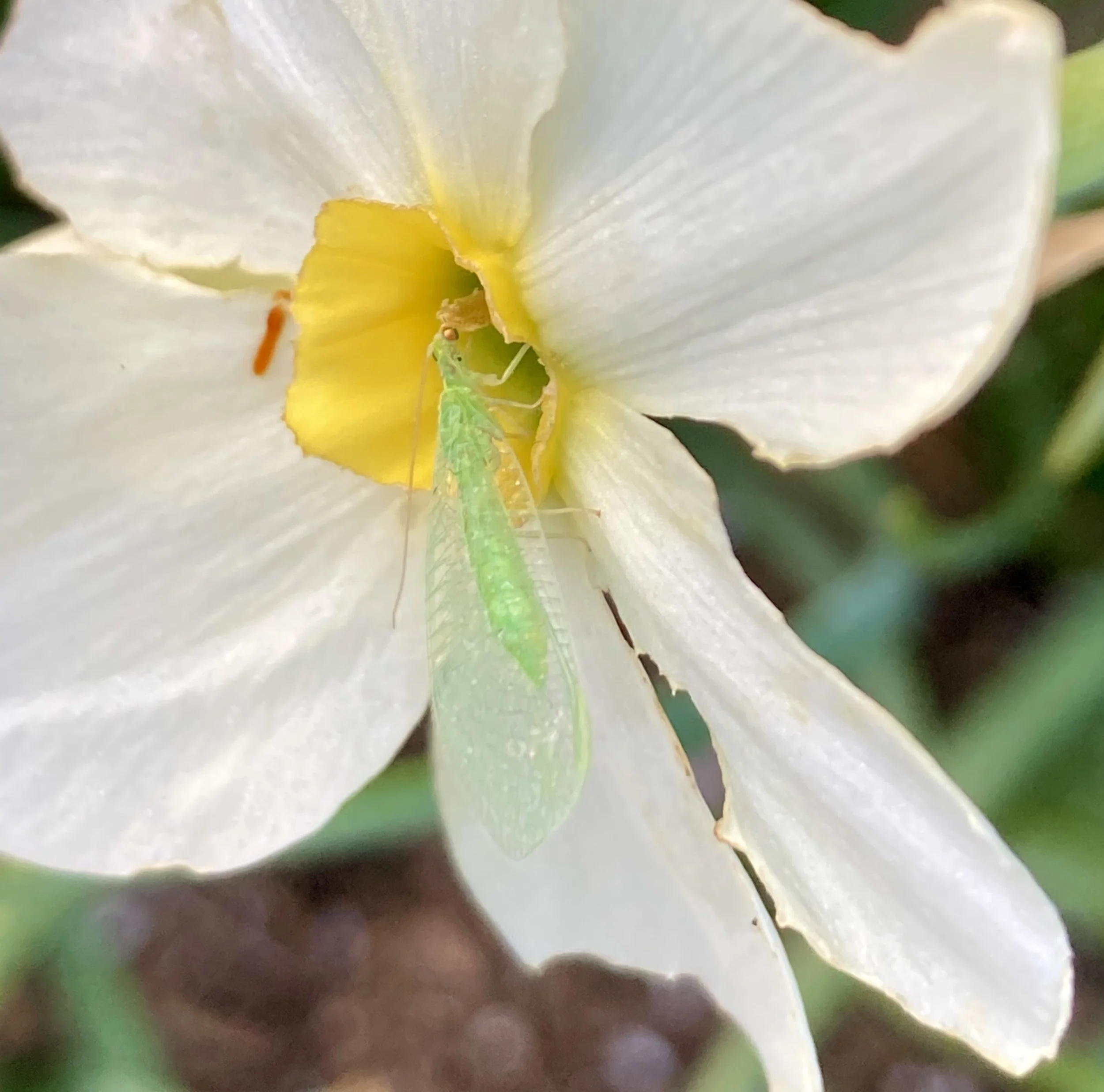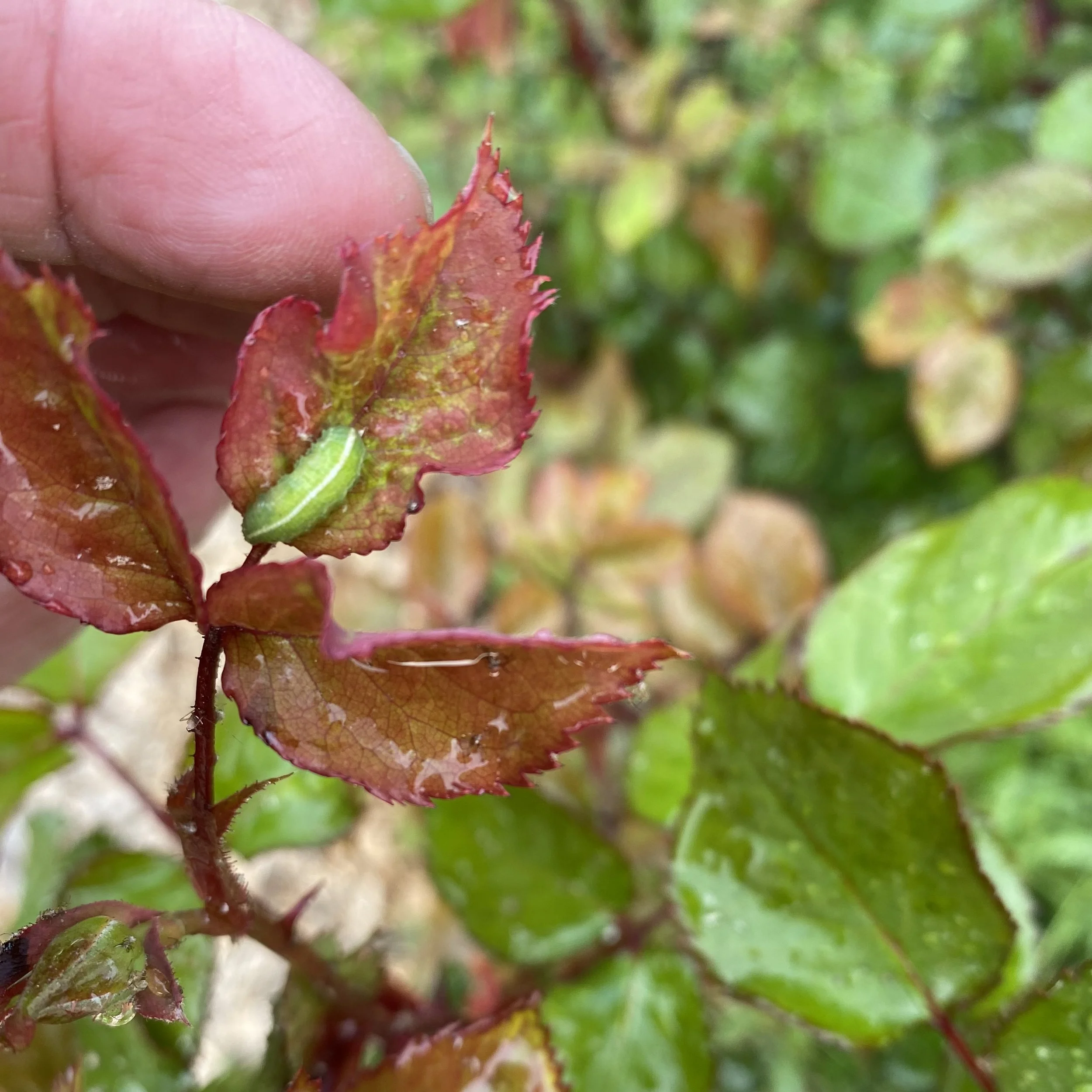Gardening for the Good Bugs
Believe it or not, good garden bugs – beneficials – do exist. According to the Xerces Society, less than 2% of the insects in our gardens are pests. Most of the insects you see in your garden are food for the beneficials, song birds, lizards, and other important wildlife.
Bugs in your garden aren’t such a bad thing. In fact, beneficials are the secret to a bountiful garden. The best way to attract them is to build your resilience as a gardener. Often, our plants’ threshold for stress is higher than ours. With the right tools and an open mind, you can learn to identify the root cause of your problems before you take action. The result is a happier, healthier garden ecosystem.
A Refresher on Integrated Pest Management
One way to address the root of your garden problems is with integrated pest management (IPM). It’s a decision-making process that encourages us to look at the system as a whole rather than simply the pest.
You do this through:
Identification
Prevention
Action steps
Cultural controls
Mechanical controls
Biological controls
Chemical controls
Biological controls, using living organisms to manage pests, are what we’re digging into today.
Common Beneficials You Want in Your Garden
Let’s play a quick game first. Are these common insects friends or foes? Take your guess:
Ladybugs (and ladybug larvae)
Lacewings (and lacewing larvae)
Syrphid flies, hoverflies, or flower flies
Mealybug destroyers (and larvae)
Parasitic wasps
Dragonflies
Spiders
These are all good bugs for your garden! We call them beneficials. They play a very important role in the health of the ecosystem by keeping it in balance. Without these important allies, your plants would struggle, pests would be more abundant, and the overall health of your garden would be compromised.
That’s why you want to think about inviting the 3 P’s into your garden:
Predators such as ladybugs that consume insects as food, reducing the population of bad bugs
Parasites like braconid wasps that use the host pest as a nursery for their young
Pollinators like bees, butterflies, moths, and flies to fertilize flowers, which increases the productivity of food crops
Did you know that 1 out of every 3 bites of food we eat is dependent on a pollinator? We want them around!
6 Tips for Attracting (and Keeping Around) the Beneficials
Now that you know bugs can be good for your growing garden, here are my tips to keep the beneficials around.
1. Use healthy garden practices
Maintaining your garden naturally ensures the soil, air, and water stay healthy, clean, and free from poison. Sustainable practices like IPM and water-wise gardening set you up for success long term while also benefiting the environment and garden ecosystem as a whole.
2. Plant a variety of plant species that have flowers
To support the good garden bugs, you need to provide food – pollen and nectar from flowers of various species, heights, shapes, and colors. Choose regionally appropriate flowering plants, favoring California native plants. Focus on an assortment that will bloom at different times of the year to attract the beneficials year-round. The top plants I love to include in my garden for the beneficials are Aster species, Ceanothus species, Cosmos species, Pincushion flower (Scabiosa species), Sunflower (Helianthus species), and Yarrow (Achillea millefolium).
Adult lacewings, adult flowerflies, and adult parasitic wasps are pollinators that require pollen and nectar as their food source. While beneficials in the larval stage strictly feed on insects, many bugs like the adult ladybug and soldier beetle eat both pollen and nectar in addition to the protein meal.
3. Let culinary herbs go to flower
It benefits the ecosystem as a whole when you allow plants to complete their natural lifecycle. Herbs like cilantro, parsley, and dill are favored among the good bugs when they go to flower. And when you attract the beneficials to your garden, the pests don’t stand a chance.
4. Remember that pests are food for the beneficials
Reduce or avoid pesticide usage when possible. Even organic pesticides will impact your garden’s delicate ecosystem… including the beneficials! If a pest population occurs, start by blasting off with water, wiping them off, or knocking them into a container of water with a few drops of dish detergent.
Keep in mind that some pests, like aphids, are seasonal and are to be expected. However, an excessive infestation of a pest can be a clue that something is not working or that the plant is stressed. That’s when it’s time to address the root cause.
5. Make mulch your garden go-to
Chunky arbor mulch provides shelter for the good bugs. Mulch also reduces water evaporation, which allows us to water more deeply and less frequently. Beginner gardeners often overwater their plants, which makes mulch a go-to garden tool. Just be sure to leave an area of your garden uncultivated and natural for the ground-nesting bees.
6. Create a happy habitat
Choosing regionally appropriate and native plants, providing a safe, secluded spot for the good bugs to shelter, and supporting them with resources they need to thrive – like a shallow dish of pebble-filled water when it’s hot – is a great way to keep them around. When you make it easy for them to survive, your garden reaps the rewards.
Ways We Can Grow Together
Supporting the beneficials is one of the best ways to increase the health of your garden and reduce the number of pests you see. When the good bugs thrive, they help you grow more flowers, more food, more resilience, and more joy. And isn’t what gardening is all about?
Gardening for the good bugs is a topic in many of the educational presentations I give to garden clubs, business groups, organizations, and agencies. If you liked this blog, book me for your next in-person or virtual event!










